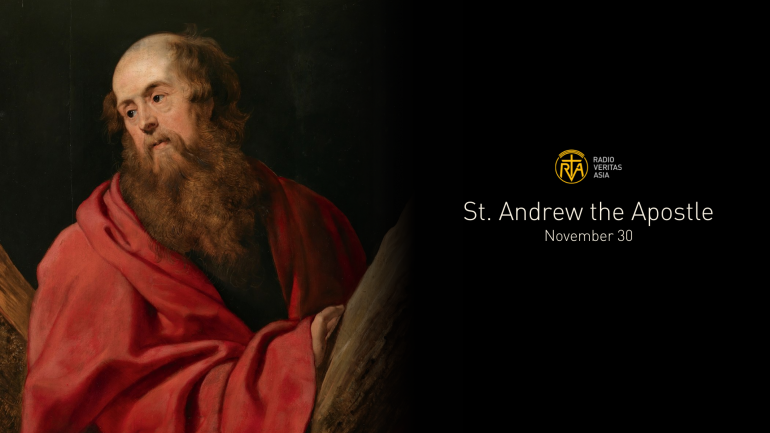Saint Andrew: A loyal apostle and his X-shaped cross

Jesus’ apostles, apart from Saint John the Evangelist, suffered gruesome martyrdom for the sake of the Christian faith. The holy man whose feast we celebrate today, Saint Andrew the Apostle, is no exception. He is remembered for being sentenced to death using an X-shaped cross.
One of the very first apostles called by the Lord, Andrew hailed from Bethsaida in Galilee and was one of the disciples of Saint John the Baptist. He followed Jesus in His ministry with his brother Peter, leaving behind their occupation as fishermen.
Eventually, Andrew was chosen to be one of the Twelve. In the Holy Scriptures, he is always mentioned together with Peter, John, and James, forming the so-called “first four.” Despite this, his name was mentioned only a handful of times in the Bible. One of his most notable Biblical moments is during the feeding of the five thousand when he presented the boy with five barley loaves and two fishes (John 6:8-9).
After Jesus’ ascension, the exact details of Andrew’s ministry are uncertain. However, according to early writers and historians, he most likely preached in Cappadocia, Galatia, and Bithyni, as well as in the land of the anthropophagi and the Scythian deserts.
It is also believed that Andrew reached Byzantium and appointed Saint Stachys as its first bishop. Furthermore, some accounts said that he spent the later years of his ministry in Thrace, Macedonia, Thessaly, and Achaia.
Andrew’s martyrdom took place in the year 60, during the reign of Emperor Nero. According to reports, he received a death sentence by crucifixion. But unlike the Lord, he was bound instead of nailed to prolong his suffering.
The cross used for him is an x-shaped one, commonly known as the decussate cross. Nowadays, Christians venerate it using the name Saint Andrew’s Cross.
In 357, the Roman Emperor Constantius II ordered the transfer of the apostle’s relics from Patras, modern-day Patrai, to Constantinople, now Istanbul. In 1208, it was moved to Amalfi, Italy, where a church in his honor was built. In the 15th century, Andrew’s head was brought to Saint Peter’s Basilica in Rome.
Finally, in September 1964, the head was returned to Patrai by Pope Paul VI as a sign of goodwill to the separated Christians of Greece.
The life of Saint Andrew the Apostle is a remarkable reminder of following the will of the Lord wholeheartedly, even if it leads to numerous sacrifices and challenges along the way. He offered His life to Him, fully embracing the possibility of a horrific death. We offer our everlasting gratitude for the noble work done by Saint Andrew and all of the apostles who shed their blood to build the lasting foundations of the Church we know today.
Radio Veritas Asia (RVA), a media platform of the Catholic Church, aims to share Christ. RVA started in 1969 as a continental Catholic radio station to serve Asian countries in their respective local language, thus earning the tag “the Voice of Asian Christianity.” Responding to the emerging context, RVA embraced media platforms to connect with the global Asian audience via its 21 language websites and various social media platforms.











